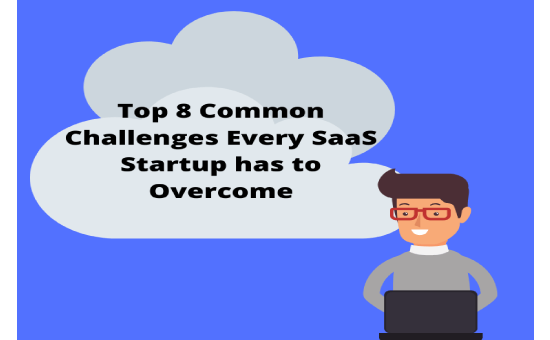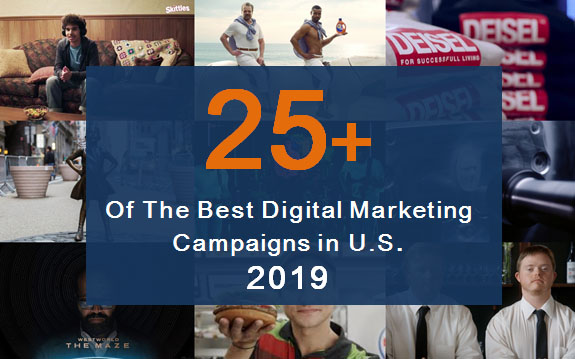Top 8 Common Challenges Every SaaS Startup Has to Overcome
Data-Driven Marketing | Dec 18, 2019
For the past few years, SaaS business models have been gaining a lot of traction. The massive success of companies built around SaaS such as Slack and Dropbox created an increasingly attractive option for a lot of entrepreneurs from various industries.
Even businesses that have been in the industry for a long time using other models have been experimenting with SaaS. But of course, it does come with a set of challenges ‒ something that not a lot of businesses are prepared for.

In this post, we’ll talk about the eight common challenges every SaaS startup will meet and how to overcome them.
1. Establishing the Market
The primary difference between a startup and an average business is that the former doesn’t often have an identified target market. In fact, most startups make their own markets by identifying problems that no one ever thought of solving before.
However, this could a startup at a disadvantage. The reason new SaaS companies fail is not that they’re solving a problem, but because they’re solving a problem that no one is interested in solving. They’re doomed to fail before they even started because they have completely miscalculated their market.
According to Voy Media, a reputable marketing agency for SaaS companies, “You can avoid committing the same mistake by adopting a lean methodology. You can build a small scale solution and then assess the reaction to it. If there is already an existing market, then you can test it based on feedback.”
2. Managing Cohort Analysis
There is so much data that you need to identify if you want to get your SaaS startup off the ground. Fortunately, you can gain a lot of information from cohort analysis.
It usually gets the data from a given platform and instead of looking at all the users in a single unit, it breaks it down into related groups for further analysis. This gives you excellent metrics on improving user onboarding, churn, free trial conversions, and the lifetime value of the customer.
With extended payback periods, it’s crucial to retain as many free-trial customers as you can. Once you convert these free-trial customers into lifelong paying customers, this will make your business profitable in the long run.
3. Onboarding New Users
Another challenge that’s often faced by SaaS startups is to successfully onboard new users to avoid product abandonment in churn and trial periods.
The best way to overcome this is to onboard your users manually. Of course, it means that you and your team might have to work overtime. But when you help your customers understand your products more, positive things could happen:
- You’ll gain valuable feedback that allows you to refine your product-market fit.
- You can form personal connections that could lead to referrals and boost your customers’ lifetime value (LTV).
- Enhance customer success and upsell higher-priced plans.
- Discover challenging aspects in your user experience that might need work.

4. Reaching the Audience
These days, a lot of customers prefer to do their research on their own to look for solutions for their problems. They’re also grown more wary with marketing messages and sales.
All of those factors paved a new way on how you can attract them with your SaaS content.
In fact, the most successful SaaS brands in the market use inbound marketing strategies at the core of their marketing campaigns. Videos, blog posts, landing pages, and other types of content that attract, retain, and convert prospects.
Also, keep in mind that building an audience is more than just publishing a blog post each day.
- You have to stay relevant to your target market.
- Learn about the particular challenges that your audience has to face and learn more about them.
- Write compelling content that people will remember after reading it.
5. Earning Customer’s Loyalty
Data migration is no longer daunting as it once was. Switching from an incumbent solution to your cloud solution is easy, and you’d likely have a smooth process in place when handling this.
But you also have to remember that while it’s easy for you, it’s also easy for your competitor as well. Meaning customer acquisition and retention has become more valuable.
That’s why your marketing efforts aimed to improve customer loyalty and engagement should go hand-in-hand with whatever lead generation activity you have.
6. Identifying a Practical Business Model
A lot of SaaS founders are quite sure (subconsciously) that once they introduce their service to the world, people are going to subscribe to it in droves. While this is true for your first batch of customers, attracting further clientele can be costly.
That’s why you have to take note of two metrics: Customer acquisition cost (CAC) and the lifetime value of the customer (LTV).
If a CAC is higher or equal to an LTV, then you’ll be spending more money than your business produces, and there isn’t any amount of growth that could solve this. Inbound marketing strategies could help keep your CAC low, as you look for ways to boost your LTV.
Related Article: How to Choose the Right Business Model For Your Startup?
7. Creating Buyer Personas
Building buyer personas is crucial to understand and attract the kind of customers that you want.
Having a deep knowledge of the kind of audience that you’re targeting will help you come with an ideal narrative that you want to tell your audience. This will improve your engagement that leads to more growth.
So, who are your ideal customers? What are their buying habits? What are their interests, pain points, and backgrounds?
The more that you’re aware of these things, the better you can market your SaaS product.
Related Article: How to Create a Well-Crafted Buyer Persona(S): 80+ Questions to Answer
8. Going Global
SaaS is a global business. You can sell it to anyone no matter where they are in the world.
However, would they feel the same about your software or app if they’re living in Paris, Tokyo, or the US? Well, that’s not quite certain.
If you decide to open in other countries apart from yours, you’d come across issues like legalities, languages, different cultures, ways of working, and many more that could impact your company’s growth.
So, at some point, internationalization can be a challenge in most SaaS startups.
One way to expand globally is to utilize channel distribution. When you team up with a distributor in your target market, you’ll gain coverage in the international market, outsourcing your marketing, global channel enablement, and sales and support to a distribution partner.
In the distribution partner model, you’re utilizing resellers that are local in those foreign markets. But of course, the success of that kind of model depends on the ability of your products to be bundled with other vendors in a way that creates value for prospects.
Final Thoughts
What you have to understand is that merely adopting a business model won’t guarantee you success. SaaS businesses go through a lot of challenges, so you have to be well-prepared in handling them.
Warning: Undefined array key "sidebar_ads" in /home/dmc/public_html/wp-content/themes/DMC/functions/helpers.php on line 824





